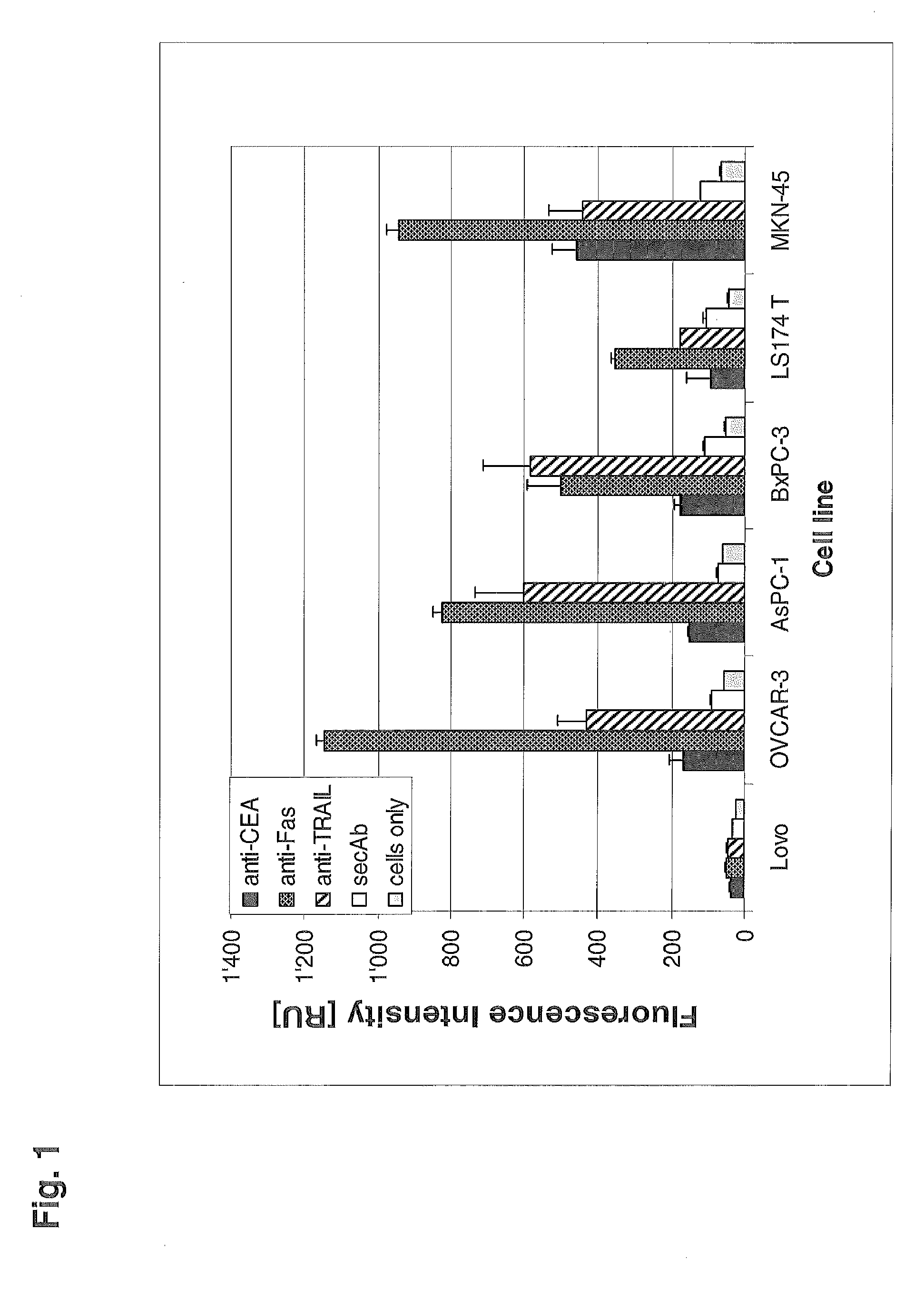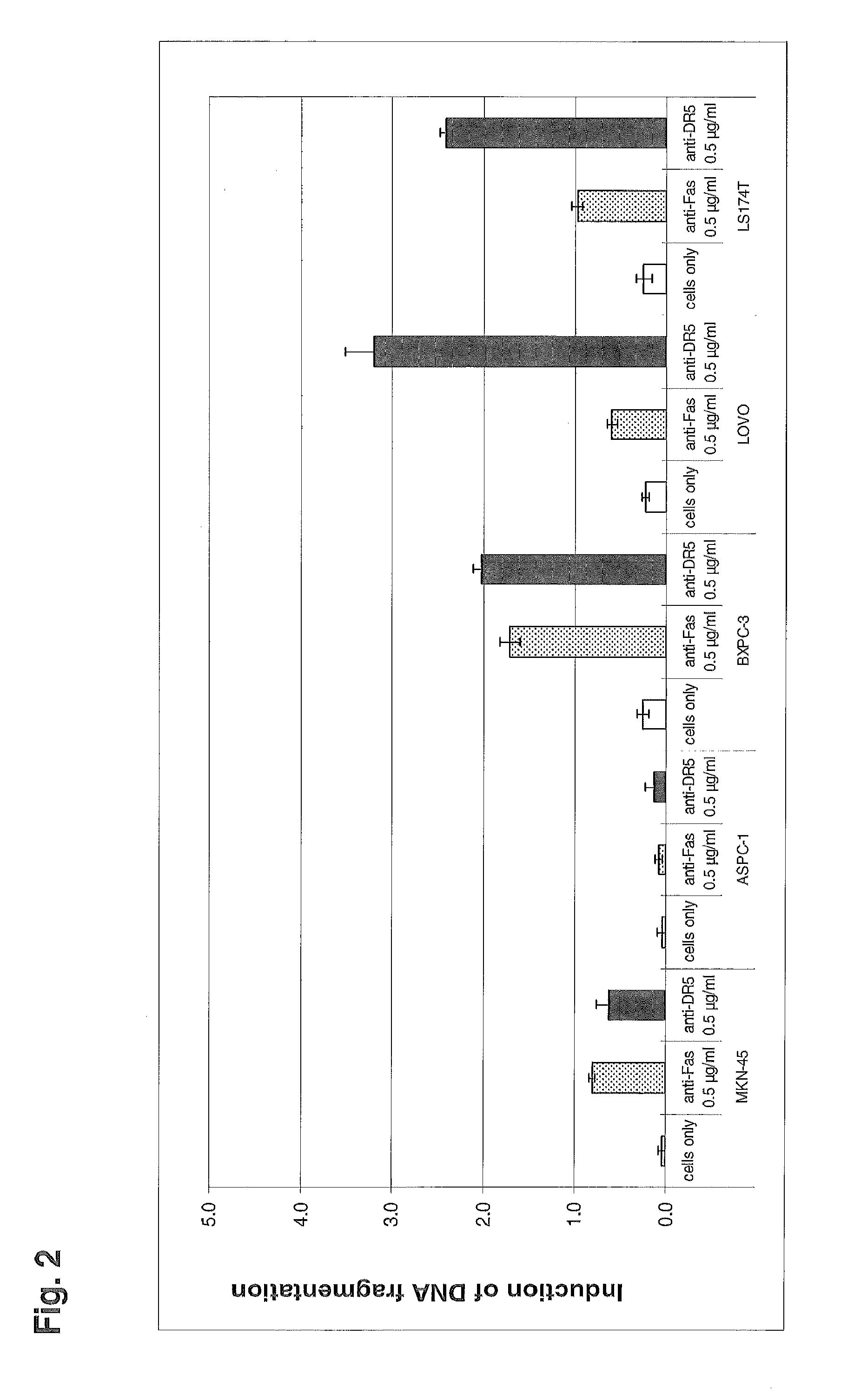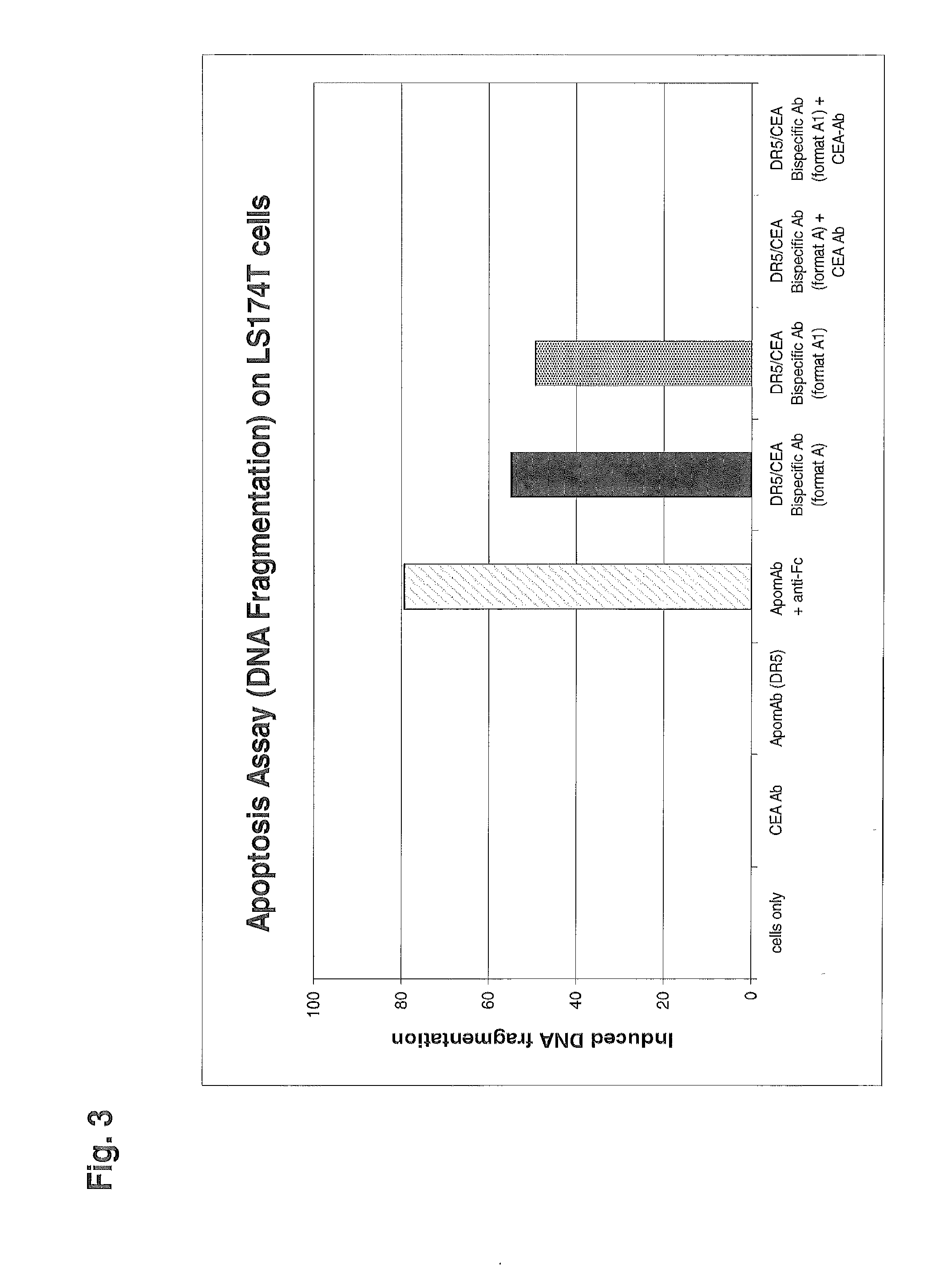Bispecific death receptor agonistic antibodies
a technology of bispecific and agonistic antibodies, applied in the field of bispecific antibodies, can solve the problems of difficult and tedious production of recombinant trails
- Summary
- Abstract
- Description
- Claims
- Application Information
AI Technical Summary
Benefits of technology
Problems solved by technology
Method used
Image
Examples
example 1
Design of Bispecific Antibodies Recognizing Human Death Receptor 5 and Human CEA
[0092]In the following tetravalent bispecific antibodies comprising a full length antibody binding to a first antigen (human death receptor, DR5) combined with two single chain Fv fragments binding to a second antigen (human carcinoembryonic antigen, CEA) fused via a peptide linker either to the C-terminus of the heavy or light chain of the full length antibody are described. The antibody domains and the linker in said single chain Fvs have the following orientation: VH-linker-VL.
[0093]As the variable light and heavy chains of the DR5 recognizing antibody sequences of ApomAb antibody described by Adams in US2007 / 0031414 A1 were used.
[0094]For the CEA antigen binding scFvs the sequences of the variable light and heavy chains of PR1A3 (Bodmer et al., 1999; U.S. Pat. No. 5,965,710) and sm3e (Begent et al., 2003; U.S. Pat. No. 7,232,888 B2) were used.
[0095]By gene synthesis and recombinant DNA technology the...
example 2
Expression and Purification of Bispecific Death Receptor Agonistic Antibodies
[0100]Separate expression vectors for the light and heavy chains for each bispecific antibody were constructed. These vectors contain a prokaryotic selection marker, regulatory elements for gene expression in mammalian cells and an origin of replication, oriP, from Ebstein-Barr virus for autonomous replication of the plasmids in EBNA containing HEK293 cells. The plasmids were propagated in E. coli, amplified, purified and co-transfected into HEK293 EBNA cells using Ca-phosphate mediated precipitation for transient expression. After seven days the cell culture supernatants were harvested and the antibodies were purified by protein A and size exclusion chromatography. The purified molecules were analyzed for homogeneity, stability and integrity by analytical size exclusion chromatography (before and after one freeze-thaw step) and SDS-PAGE analysis (under non-reducing and reducing conditions).
TABLE 2Summary o...
example 3
Induction of Apoptosis by Death Receptor Bispecific DR5-CEA Antibody Molecules
[0105]The human DR5 death receptor agonistic antibody ApomAb induces apoptosis of DR5 expressing tumor cells, such as the colon cancer cell lines LS 180 or Colo-205. In-vitro, ApomAb on its own mediates significant apoptosis which can be dramatically increased by cross-linking of the ApomAb-bound DR5 with antibodies binding to the human Fc region of ApomAb. This induction of Apoptosis also translates into in-vivo where it could be shown for different tumor models that ApomAb exhibits significant efficacy (Jin et al., 2008; Adams et al., 2008), most probably by cross-linking events via the human Fc-receptors. To evaluate the potential of DR5-CEA bispecific antibodies for tumor site targeted cross-linking of DR5 with subsequent induction of apoptosis the activity of ApomAb-CEA bispecific molecules in terms of apoptosis mediation was analyzed in-vitro.
[0106]In order to determine if DR5-CEA bispecific antibody...
PUM
| Property | Measurement | Unit |
|---|---|---|
| concentration | aaaaa | aaaaa |
| concentration | aaaaa | aaaaa |
| concentrations | aaaaa | aaaaa |
Abstract
Description
Claims
Application Information
 Login to View More
Login to View More - R&D
- Intellectual Property
- Life Sciences
- Materials
- Tech Scout
- Unparalleled Data Quality
- Higher Quality Content
- 60% Fewer Hallucinations
Browse by: Latest US Patents, China's latest patents, Technical Efficacy Thesaurus, Application Domain, Technology Topic, Popular Technical Reports.
© 2025 PatSnap. All rights reserved.Legal|Privacy policy|Modern Slavery Act Transparency Statement|Sitemap|About US| Contact US: help@patsnap.com



